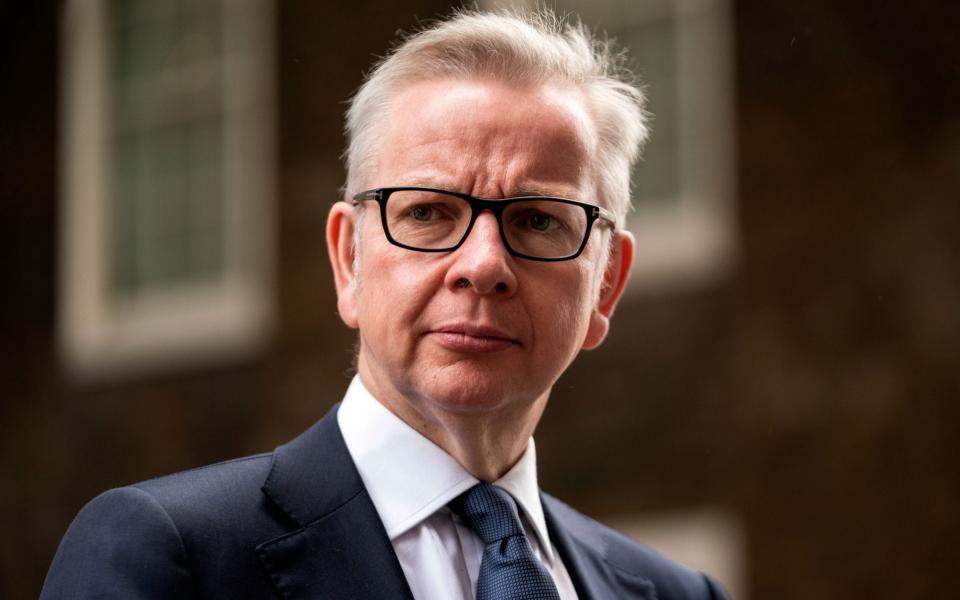Downing Street's reboot shows power of Michael Gove and Dominic Cummings behind scenes

The Downing Street departure of Isaac Levido, Boris Johnson’s general election supremo, last week is the latest sign of the ‘reset’ taking place inside No 10.
Coinciding with the recent resignation of Cabinet Secretary Sir Mark Sedwill, followed on Thursday by Sir Richard Heaton, permanent secretary at the Ministry of Justice - the fourth top civil servant to quit in just five months - Levido’s exit signals change is afoot.
The protege of Sir Lynton Crosby was temporarily brought back at the end of March to sharpen the Government’s coronavirus messaging but is now reuniting with his business partner Michael Brooks to run their newly-founded consultancy firm Fleetwood Strategy.
As with Sir Mark, who last week walked away with a £250,000 severance package, the farewell has imbued rumours of a personality clash with Dominic Cummings, the Prime Minister’s chief adviser.
That the former Vote Leave campaign director has kept his job - despite the Barnard Castle debacle - while all around him civil servants are losing theirs, serves as yet another reminder of the power he continues to wield.

Equally omnipresent is his old boss, the Cabinet Office minister Michael Gove, who has joined forces with his former special adviser to lead a Whitehall shake-up aimed at “taking back control” of “The Blob”.
When he worked for Mr Gove when he was Education Secretary from 2010 to 2014, Mr Cummings made no secret of his dislike for the “gulf” between the people “who run government departments” and the public they serve.
In an 8,000-word speech on the subject earlier this month, Mr Gove promised the “structure, ambition and organisation” of the British state must change.
Work has already begun on a new committee structure and a more important role for the Government’s network of non-executive directors - in addition to the recent golden goodbyes.
Yet while Mr Johnson may have placed his trust in the man who stabbed him in the back during the 2016 leadership race, some Tories remain suspicious of Mr Gove, amid briefings “he’s the one really running this government.”
“Gove is now Boris’s number two,” said one senior Conservative. “(Dominic) Raab has been sidelined despite being de facto deputy. Gove knew all along that the Cabinet Office would be the most powerful place to be.”
Not only in charge of civil service reform but also leading on Brexit certainly places Mr Gove in a formidable position as he molds and chairs "operations" committees in each policy area, tasked with holding Whitehall departments to account and ensuring the Prime Minister's priorities don't get bogged down in bureaucracy.

Yet the all encompassing-role has already rubbed a number of Cabinet ministers up the wrong way. The first to take aim last week was International Trade Secretary Liz Truss who wrote a letter to Mr Gove and Chancellor Rishi Sunak on Wednesday questioning the “credibility” of Mr Gove’s new border Brexit regime, which would see customs and health checks for goods imported from the EU phased in over six months, rather than immediately.
Eyebrows were raised when her warning that the new scheme risked legal challenge by the World Trade Organisation was leaked to Business Insider.
According to one well-placed source: “Liz is going for Gove because she knows she’s going to be sacked and has got nothing to lose. She’s angry with Gove because he doesn’t think a US trade deal is possible.”
It is unlikely a reshuffle will take place until the Autumn - when Mr Johnson optimistically hopes the worst of the Covid-19 crisis will not only be behind him but that Brexit will be “done and dusted”. Insiders say the appointment of his EU sherpa David Frost as Sir Mark’s replacement as National Security Advisor from September was a tactical move designed to pressure Brussels.
Defence Secretary Ben Wallace could be replaced by Anne-Marie Trevelyan after her Department for International Development was merged with the Foreign Office.
Suggestions that Education Secretary Gavin Williamson might be ousted following his failure to fully reopen primary schools appear wide of the mark, however, with the tarantula-owning former chief whip being partly credited with Sir Mark’s removal. “Gavin has never forgiven him for making him resign from Theresa May’s cabinet over the Huawei leak.”
“The plan is still for a submissive cabinet,” added the source.
The appointment of Simon Case as No 10’s new Permanent Secretary to run the Government's coronavirus response means it is in a better place on test and trace than a month ago.
Mr Case is understood to have been behind the recent sidelining of the Government's Scientific Advisory Group for Emergencies (Sage), making way for an expanded Joint Biosecurity Centre to take a more prominent role.
Although tipped as a possible successor to Sir Mark - cynics suggest that Downing Street may opt for someone more malleable than a career civil servant with vastly more experience than Mr Johnson and Mr Cummings combined (although perhaps not Mr Gove, the cabinet’s longest serving member).
“Whoever takes it is either going to have to be completely compliant or not in the job for very long,” said one No 10 insider. “Cummings and Gove are determined to have someone who recognises where the power lies.”

 Yahoo News
Yahoo News 